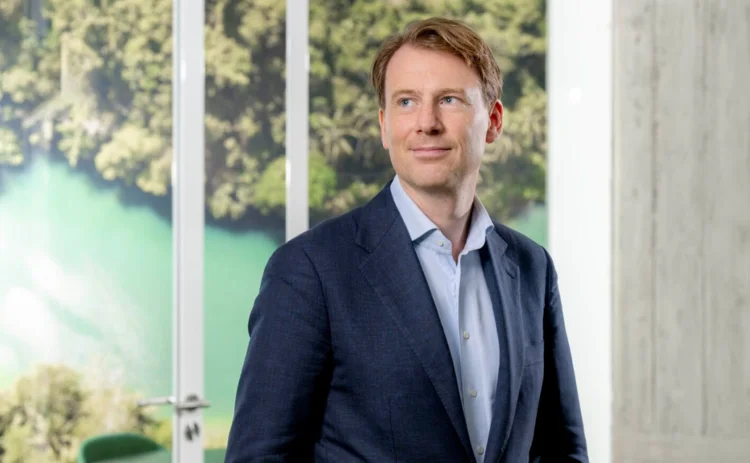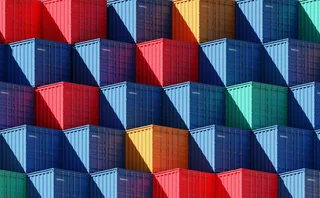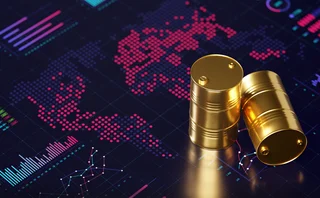
Climate risk manager of the year: STX Group
Energy Risk Awards 2024: Environmental trading firm provides much-needed green market liquidity with innovative financing product

Reducing climate risk is proving to be a capital-intensive business. As companies seek to finance the uptake, production and trading of environmental commodities – whether through carbon reductions, biofuels, fossil-free chemicals or environmental market credits and allowances – they are under constant pressure to use that capital as efficiently as possible.
Too often, however, banks and other lenders are wary of lending against environmental commodities or accepting them as collateral. Their novelty – whether in terms of price history, or a lack of experience in taking title and liquidating them – can make it difficult for environmental commodity project developers to raise finance and can tie up precious capital in holding allowances needed for compliance.
“Environmental markets are scaling,” says Marijn van Diessen, chief executive of STX Group, the Amsterdam-based environmental commodity trading and climate risk firm, which has won Energy Risk’s 2024 Climate risk manager of the year award. “Prices have been going up in most of our markets and, logically, so too have the capital requirements. More capital is needed.”
Meanwhile, ever-greater amounts of capital are becoming tied up in the environmental commodities that energy and industrial companies need to deliver to demonstrate compliance with various environmental markets – whether carbon allowances or voluntary guarantees of origin for renewable power or biomethane production.
Van Diessen notes that, in some environmental markets, the notional value of credits or allowances that companies have to deliver to meet their obligations can be substantial. “This is absorbing working capital for companies for which environmental commodity trading is far from their core business,” he says.
To address the heightened demand for funding environmental certificates and climate action, STX Group unveiled last December a special purpose vehicle (SPV). The structure works by STX Group entering into a repurchase agreement (a repo) with the client, whereby STX takes temporary ownership of a range of environmental commodities. These are placed into an SPV that is funded by a lender, whether a bank or an institutional investor, in exchange for a return. This funding is passed through to STX’s client, providing working capital.
Van Diessen says the company could provide this sort of service directly to clients, but that it would use up capacity on its own balance sheet. “These SPVs can help provide liquidity” at a lower cost of capital for either the client or STX, he adds.
That initiative built on the work STX undertook to raise a €150 million ($160.3 million) credit facility, which was announced in April 2023. It was backed by a diverse portfolio of environmental commodities, including Guarantees of Origin and Renewable Gas Certificates, in a precedent-setting move from global European banks whereby they recognised those commodities as collateral assets with financial value.
“We think this was the first time the banks allowed for the specific types of environmental commodities to be used as a collateral for this type of facility,” says van Diessen. “Many of these products are novel concepts, so we had to have a lot of discussion with the banks,” he adds, noting that they needed to get comfortable with how they could access registries, what sort of discount to apply to the market value of various allowances, and how they could sell them if required.
“These banks are helping us to make our inventory liquid,” says van Diessen. “Indirectly, this enables us to enter into more trades, with more counterparties, and allows us to create more liquidity in environmental markets.”
This work is helping to better integrate environmental commodities into the wider financial system, van Diessen believes. He says STX is working with environmental market registries to ensure their rules facilitate these types of structures and adds the work is encouraging other banks to explore environmental commodity financing: “We are seeing an enormous pull from other banks to participate in structures like these.”
Such an integration process is vital, he says, because environmental markets have proven their worth over the past couple of decades and are likely to become increasingly important tools to deliver environmental objectives in future. “Environmental markets have really proven to be effective,” he says. “The EU Emissions Trading System is a good example of that, as is the biomethane market. Without an environmental market mechanism, Europe’s biomethane market wouldn’t have got off the ground.”
Only users who have a paid subscription or are part of a corporate subscription are able to print or copy content.
To access these options, along with all other subscription benefits, please contact info@risk.net or view our subscription options here: http://subscriptions.risk.net/subscribe
You are currently unable to print this content. Please contact info@risk.net to find out more.
You are currently unable to copy this content. Please contact info@risk.net to find out more.
Copyright Infopro Digital Limited. All rights reserved.
As outlined in our terms and conditions, https://www.infopro-digital.com/terms-and-conditions/subscriptions/ (point 2.4), printing is limited to a single copy.
If you would like to purchase additional rights please email info@risk.net
Copyright Infopro Digital Limited. All rights reserved.
You may share this content using our article tools. As outlined in our terms and conditions, https://www.infopro-digital.com/terms-and-conditions/subscriptions/ (clause 2.4), an Authorised User may only make one copy of the materials for their own personal use. You must also comply with the restrictions in clause 2.5.
If you would like to purchase additional rights please email info@risk.net
More on Commodities
Energy Risk Asia Awards 2024: The winners
Winning firms adapt to change with exemplary risk management skills
Foreign funds are bulls in China’s onshore commodity futures
Growing participation from overseas investors is boosting liquidity in what’s already a boom market
Energy Risk Software Rankings 2024: IT demands increase amid rising risk
Heightened geopolitical and credit risk increase requirements on commodities software
Energy Risk Asia Awards 2023: The winners
Winning firms demonstrate resilience and robust risk management amid testing times
ION Commodities: addressing the market’s recent pain points
Energy Risk Software Rankings winner’s interview: ION Commodities
Energy Risk Commodity Rankings 2023: adapting to new market dynamics
Winners of the 2023 Commodity Rankings provided reliability when clients faced extreme change
Energy Risk Software Rankings 2023: managing uncertainty
Unpredictable markets make CTRM software choices key
Navigating the volatility and complexity of commodity markets
Commodity markets have experienced significant challenges since the Covid-19 pandemic, the conflict in Ukraine and the subsequent sanctions imposed on Russia. These unprecedented events have caused fluctuations in supply and demand, disrupted global…








